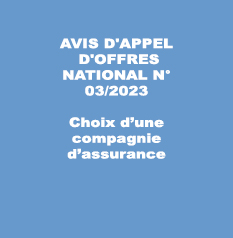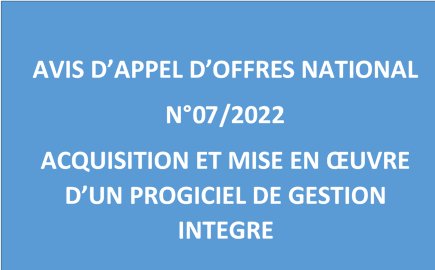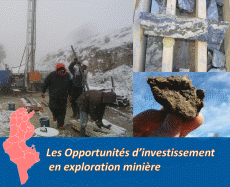| Programme annuel & rapport de suivi technique |
-

Rapport d'activités 2023
-

Programmes Techniques 2024
|
| Géocatalogue |

|
| Appels d'Offres |
-

ACQUISITION DES TICKETS RESTAURANT POUR LE PERSONNEL DE L’ONM
-

CHOIX D’UNE COMPAGNIE D’ASSURANCE
-

ACQUISITION ET MISE EN ŒUVRE D’UN PROGICIEL DE GESTION INTEGRE
|
|
Investir en Tunisie |


|
|
|
|
|
::
Documentation and Editions
>>
Research library
|
| |
|
[
Search by author
]
[
Search keyword
]
[
Search by index
]
[
Search by category
]
|
title of the reference :
|
Structural evolution of Djebel Debadib Anticline
|
|
Publication Date:
|
1988
|
|
Author :
|
Snoke Arthur W., Schamel Steven, Karasek, Richard Mark
|
|
Catalogue type :
|
Livre
|
|
Catalogue reference :
|
Vol. 7, N°3 (USA) Tectonics Vol. 7, N°3 Structural evolution of Djebel Debadib Anticline Evolution structurale de l'anticlinal du Djebel Debadib : un élément clé concernant le style tectonique régional de l'Atlas Tunisien. a clue to the regional tectonic style of the Tunisian Atlas Djebel Debadib is a northeast trending anticline in the Tunisian Atlas, near El Kef, Tunisia. The core of the anticline consists of a deformed Triassic, gypsum-matrix breccia containing clasts of supratidal dolomite, terrigeneous clastic rocks, and ophites (metabasites). Locally, low-grade metasedimentary rocks, occurring as clasts in the evaporite, may represent fragments of basement rock plucked from salt subcrop during deep-seated flowage. The multiply deformed Triassic rocks are juxtaposed against Cretaceous or younger rocks, and Jurassic and Neocomian strata are not present in outcrop. These characteristics have been cited in may studies to suggest a history of diapirism to explain both the internal structure of the Triassic rocks and the contact relations with the younger rocks. A previously unreported unconformity, developed on the Triassic rocks and overlain by Aptain-Albain strata, indicates that an important period of piercement occurred during the Early Cretaceous for the Djebel Debadib diapir. From the mid-Cretaceous to the late Eocene the continental margin of northern Tunisia was a regional basin in which a thick sequence of carbonate rocks was deposited. Beginning in late Oligocene time, sandy clastic sediments accumulated on the older carbonate rocks above a regional unconformity, and during the middle Miocene Atlas orogeny, numerous, northeast-southwest folds deformed the rocks of the Tunisian trough including the diapiric Triassic masses. These folds, commonly boxlike in geometry, were extensively faulted during the late Miocene and Pliocene. A four phase tectonic model is recognized for the Tunisian Atlas : (1)early Mesozoic rifting of the north African continental margin, (2)diapiric emplacement of the Late Triassic-Liassic(?)evaporites into overlying strata beginning in the early Cretaceous, (3)folding of the cover strata in response to regional compression culminating in the middle Miocene Atlas orogeny, (4)the development of transvers grabens during late orogenic normal faulting (latest Miocene to Recent). A major regional décollement is not considered necessary to account for the shortening of the sedimentary cover during the middle Miocene deformation. Rather, the principal driving mechanism of regional crustal shortening was the reactivation of early Mesozoic normal faults as reverse faults that displaced basement rocks. This model implies that the small amount of shortening recorded, in the Tunisian Atlas involved active shortening and structural thickening of basement and the concurrent deformation of the sedimentary cover.
bibliogr. pli ; anticlinal ; carte géologique ; Tunisie ; Tunisie Nord Occidentale ; J. Debadib Schamel Steven Karasek, Richard Mark Snoke Arthur W. Tectonique
|
|
Indexation decimale :
|
Tectonique
|
|
Keywords :
|
pli ; anticlinal ; carte géologique ; Tunisie ; Tunisie Nord Occidentale ; J. Debadib
|
|
Summary :
|
Djebel Debadib is a northeast trending anticline in the Tunisian Atlas, near El Kef, Tunisia. The core of the anticline consists of a deformed Triassic, gypsum-matrix breccia containing clasts of supratidal dolomite, terrigeneous clastic rocks, and ophites (metabasites). Locally, low-grade metasedimentary rocks, occurring as clasts in the evaporite, may represent fragments of basement rock plucked from salt subcrop during deep-seated flowage. The multiply deformed Triassic rocks are juxtaposed against Cretaceous or younger rocks, and Jurassic and Neocomian strata are not present in outcrop. These characteristics have been cited in may studies to suggest a history of diapirism to explain both the internal structure of the Triassic rocks and the contact relations with the younger rocks. A previously unreported unconformity, developed on the Triassic rocks and overlain by Aptain-Albain strata, indicates that an important period of piercement occurred during the Early Cretaceous for the Djebel Debadib diapir. From the mid-Cretaceous to the late Eocene the continental margin of northern Tunisia was a regional basin in which a thick sequence of carbonate rocks was deposited. Beginning in late Oligocene time, sandy clastic sediments accumulated on the older carbonate rocks above a regional unconformity, and during the middle Miocene Atlas orogeny, numerous, northeast-southwest folds deformed the rocks of the Tunisian trough including the diapiric Triassic masses. These folds, commonly boxlike in geometry, were extensively faulted during the late Miocene and Pliocene. A four phase tectonic model is recognized for the Tunisian Atlas : (1)early Mesozoic rifting of the north African continental margin, (2)diapiric emplacement of the Late Triassic-Liassic(?)evaporites into overlying strata beginning in the early Cretaceous, (3)folding of the cover strata in response to regional compression culminating in the middle Miocene Atlas orogeny, (4)the development of transvers grabens during late orogenic normal faulting (latest Miocene to Recent). A major regional décollement is not considered necessary to account for the shortening of the sedimentary cover during the middle Miocene deformation. Rather, the principal driving mechanism of regional crustal shortening was the reactivation of early Mesozoic normal faults as reverse faults that displaced basement rocks. This model implies that the small amount of shortening recorded, in the Tunisian Atlas involved active shortening and structural thickening of basement and the concurrent deformation of the sedimentary cover.
|
|
Exemplaries :
|
TU363B, TU363A
|
|
|
|
|
|
|
|



